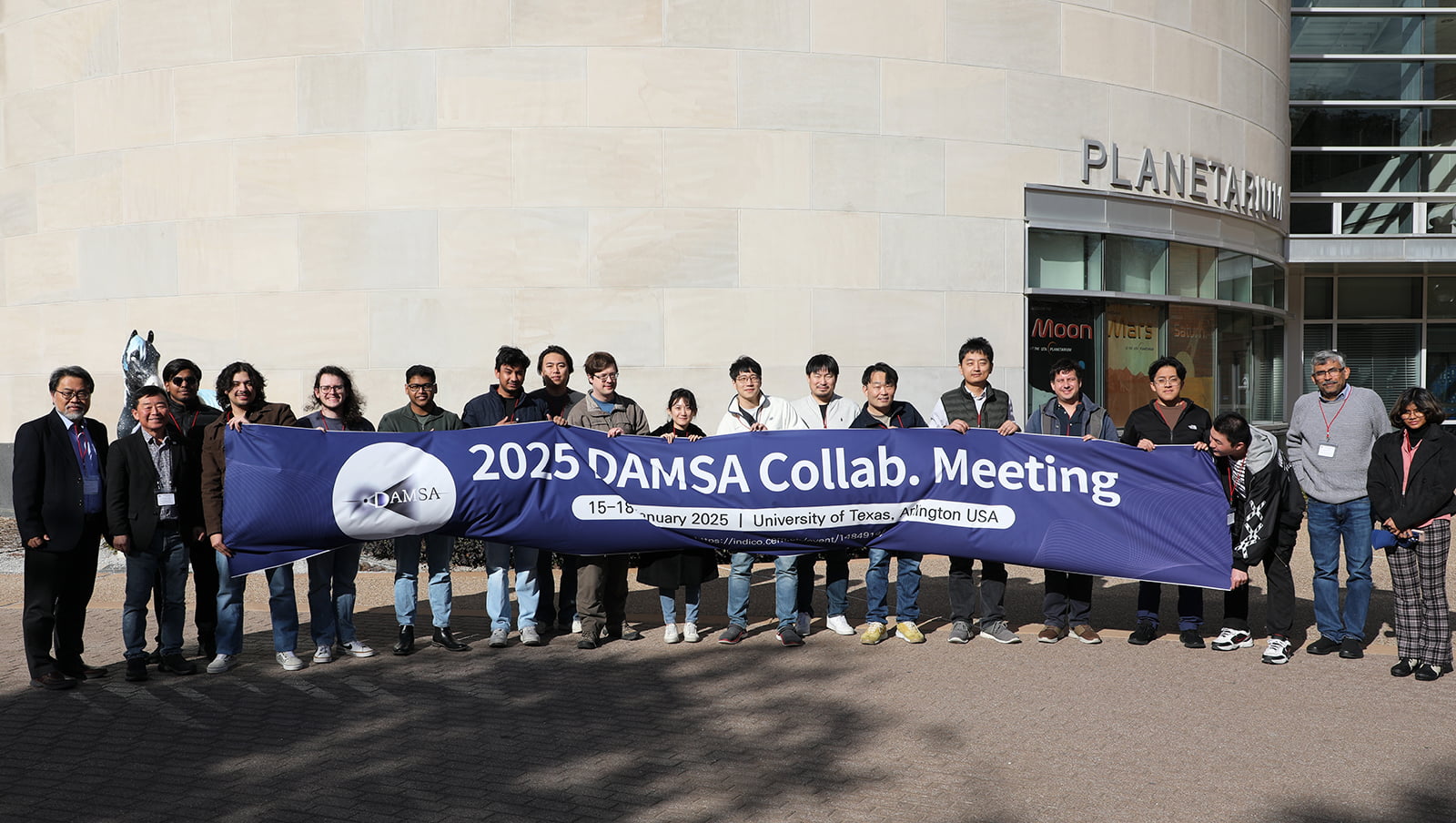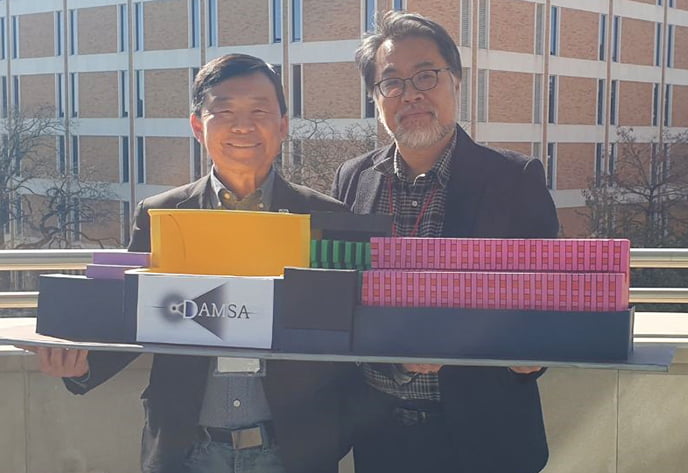Life Sciences Building, Room 206
501 S. Nedderman Drive
Box 19047
Arlington, TX 76019
Physicists convene at UTA for project planning meeting in search for new particle

An international group of theoretical and experimental physicists recently gathered at The University of Texas at Arlington for the inaugural meeting of a new particle physics experiment, designed to search for previously unknown particles.
UTA was host for the DAMSA (DArk Messenger Searches at an Accelerator) Collaboration Meeting from January 15-18. The goal of the collaboration is to create an experiment that could discover the dark messenger particle utilizing a particle accelerator. Dark messengers are theoretical particles that may reside in the boundary of the region which physicists call the “dark sector” — an area which is beyond the standard model of physics and could link the dark sector to the visible world.
The DAMSA collaboration was created by Jaehoon Yu, UTA professor of physics, who has over three decades of experience in particle physics research. Yu is leading the project along with Juan Estrada, senior associate at the Kavli Institute for Cosmological Physics at the University of Chicago and Fermilab, and Un-Ki Yang, professor of physics and astronomy at Seoul National University in South Korea.
Damsa means “deep thoughts” in Korean and was chosen since the search for dark matter is at a juncture of deep thoughts, Yu said.

It was the first in-person meeting for the project since the DAMSA experiment was established just under two years ago. The meeting’s goals included creating a baseline conceptual design for a DAMSA detector; planning for the long-term strategy of the experiment; discussing potential physics topics which can be accomplished at various facilities; and devising strategies to secure funding for the project.
“The meeting was a smashing success, with about 30 in-person participants and up to 25 remote participants,” Yu said. “The collaboration meeting explored the potential physics topics that can be investigated at various accelerator facilities throughout the world, including those at Fermilab in the U.S. and CERN in Switzerland.”
The DAMSA collaboration will be a short baseline particle experiment, which means the detectors used to search for the particles will be placed extremely close to the particle production point. This will allow for precise measurements of the particles’ behavior just after they are created, before they decay away.
Since photons — the smallest possible particles of electromagnetic energy and therefore the smallest particles of light — are the source for dark sector particle production, the DAMSA team hopes to produce as many photons as possible for the detector to measure the produced dark messenger particle. The high-intensity nature of the particle beams will allow for the investigation of dark-sector particles, including axion-like particles (ALPs) and dark photons, Yu said. Axions are hypothetical elementary particles which are believed to be low mass, electrically neutral bosons and a part of dark matter.
The team plans to devise a small-scale DAMSA pathfinder experiment to test for the possibility of reaching the targeted sensitivity. Following the “Little DAMSA” study, team members plan to work on creating a pilot detector. If funding can be secured, the team hopes to be able to begin taking data by the end of the decade.
--
The UTA College of Science, a Carnegie R1 research institution, is preparing the next generation of leaders in science through innovative education and hands-on research and offers programs in Biology, Chemistry & Biochemistry, Data Science, Earth & Environmental Sciences, Health Professions, Mathematics, Physics and Psychology. To support educational and research efforts visit the giving page, or if you're a prospective student interested in beginning your #MaverickScience journey visit our future students page.